Tools, parts and what you need for guitarmaking
-
Tools & Jigs
-
Tools
- Fretting Tools (Base)
- Pliers
- Sanding Blocks
- Brushes
- Files
- Routers
- Routing Templates
- Templates / Straight Edges
- Fretting Templates - Fret Scale Templates
- Clamps
- Knives
- Measuring Tools
- Tool Sets
- Reamer
- Keys, Wrenches
- Drill Jigs
- Saws
- Drill Bits
- Scrapers
- Bending Irons
- Other Tools
- Fret Hammer
- Fret Pressing
- Fretboard Protector
- Fret Bender & Tang Nipper
- ... More
- Jigs for Luthiers
-
Tools
-
Hardware & Parts
- Necks & Bodies
- Tuners
-
Hardware / Parts
- Truss Rods
- Carbon / Titan Reinforcement
- Trussrod Nuts
- Washer for truss rods
- Bridge Pins
- End Pins
- Bridges & Tailpieces E-Guitar
- Bridges & Tailpieces
- Covers
- Pickguards / Scratch Plates
- Strap Locks
- Bridge Accessories / Spare Parts
- Screws, Nuts, Washers
- Neck Attachement
- String-Ferrules
- Jack plates
- Control Plates
- String Retainer / String Trees
- knobs (pots/switch)
- Relic Parts
- ... More
- Nuts & Saddles
- Fret Wire
- Pickups & Electronics
- Materials & Supplies
- How-to
- Guitar Making
Shop Startpage Guitar Making Luthiery 000-Standard Back
Preparation of the Guitar Back
The floor is normally glued together like the ceiling from two mirrored boards. Together with the sides the back has the technical task of keeping the body stiff and straight. Since the sound is produced by excited string vibration over the top, the back and sides do not need to have the characteristics of being particularly light and quick to respond. Usually hardwoods such as maple and rosewood are used for this purpose, but it is also possible to build attractive guitars with rarer species such as pear or cherry.
The rough sawn pieces are prepared as described for the ceiling, the joints are then glued together. I use a cylinder grinding machine to achieve the material thickness of 2.5mm. Of course you can do the planing with a toothed plane and a lot of effort by hand, as you have done since the beginning.
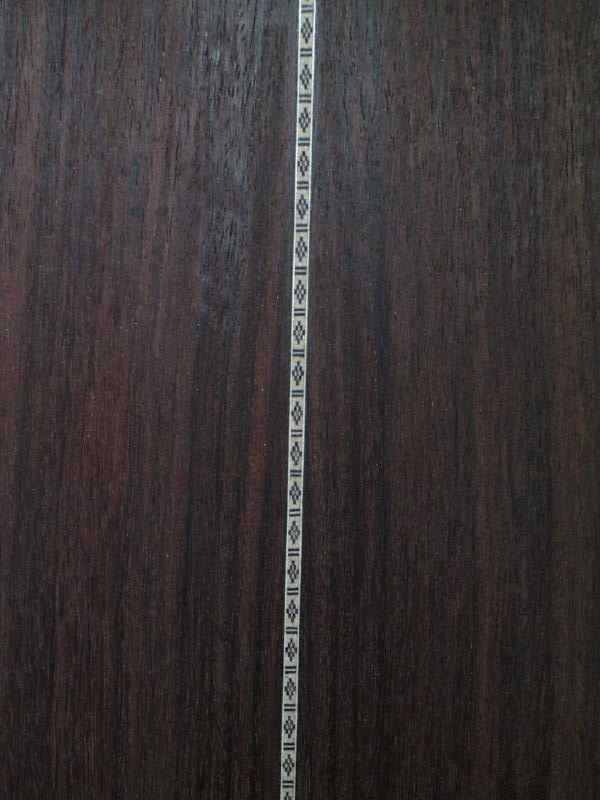 |
The middle seam of the back of more valuable instruments usually gets a decorative hoop. Depending on the model, specialized manufacturers offer different patterns. I bought one with about 5x2mm cross-section. I mill the channel with the router at a guide line. If the width and depth of the groove is correct, I lay a small glue bed in front of it and then press the strip in. Dry it now on a very flat surface, preferably weighted down with a few hammers, so that the decorative strip is not glued unevenly.
The middle seam is protected from the inside with a wooden strip to prevent it from bursting open. The wood for this is an 18mm wide strip, which I always cut out of the cross grain of the top. Once the bracing has been drawn with a pencil, the pieces of wood can be cut to length and glued to the middle seam to fit exactly.
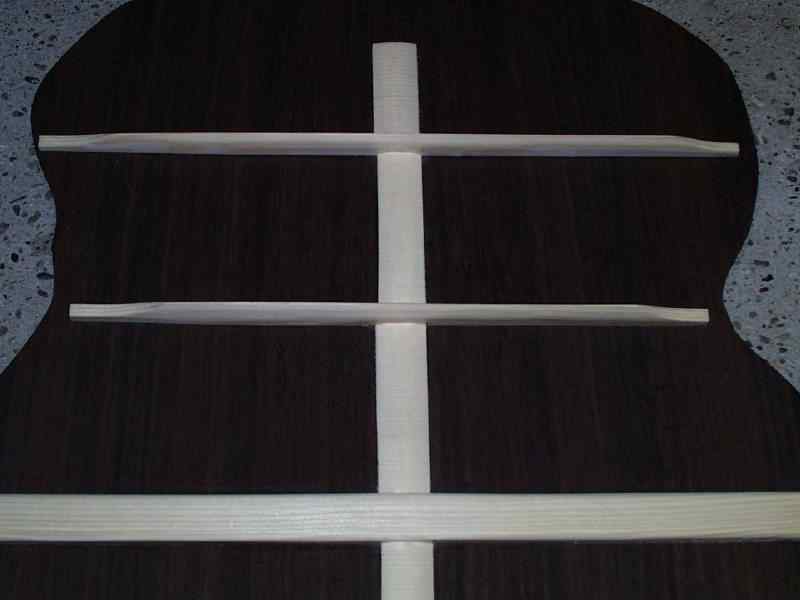 |
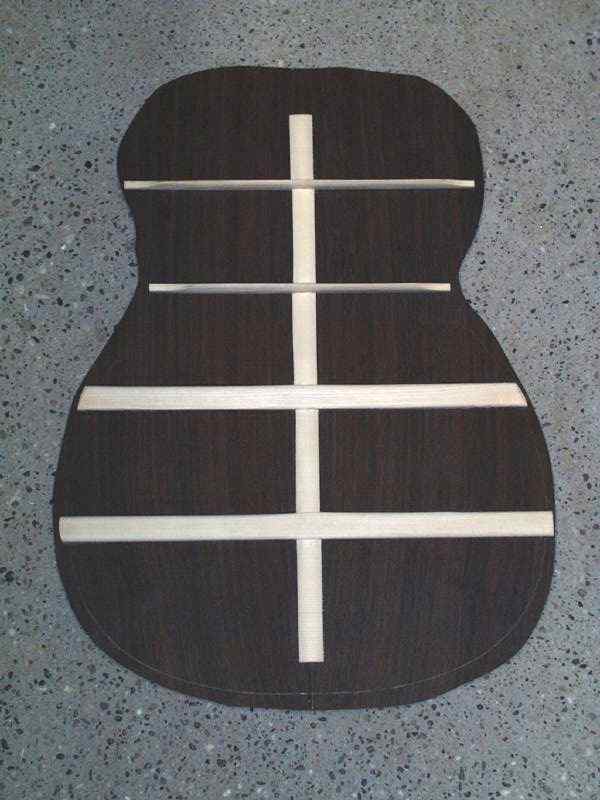 |
The balking corresponds to a ladder construction. The narrow and wide slats are cut out according to the annual rings, the width is planed correctly and the foot area is preformed according to the floor curvature (15' feet).
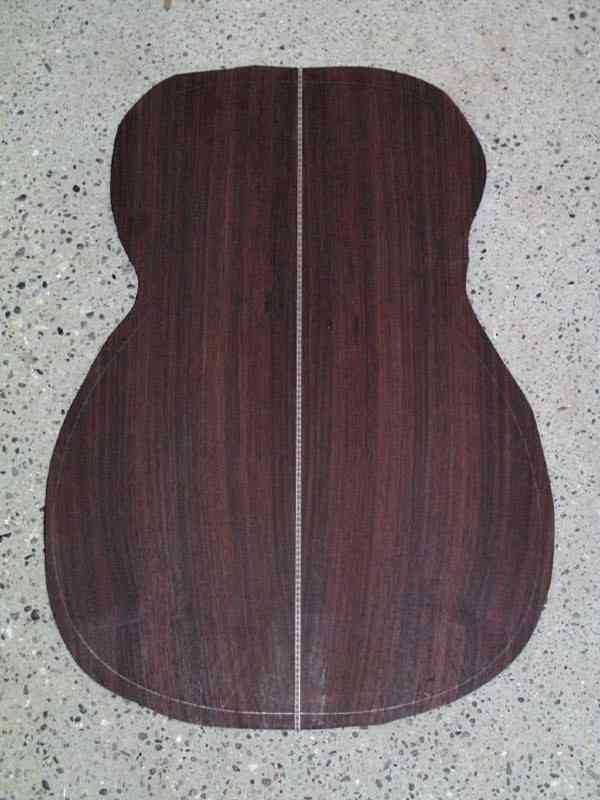 |
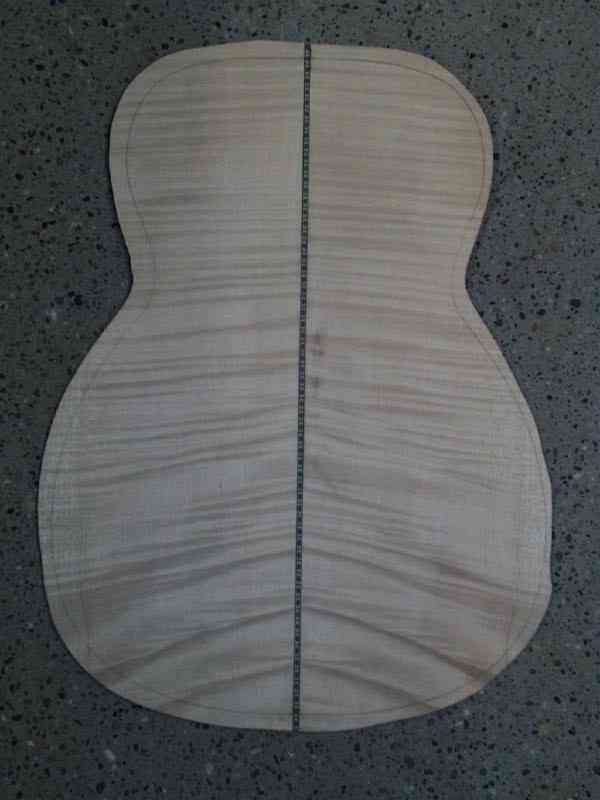 |
Once the mouldings have been glued on, the widths carved into an arch with a plane, and the ends finished to a thickness of about 3-4mm, the flooring is finished with a final sanding (240 grain).
|
Rall Guitars & Tools Hauptstrasse Tel +49 (0) 8803-48856-56 Retail Shop: By appointment only |
Subscribe our Newsletter By subscribing our newsletter you accept our Privacy Policy and Terms and Conditions. |



